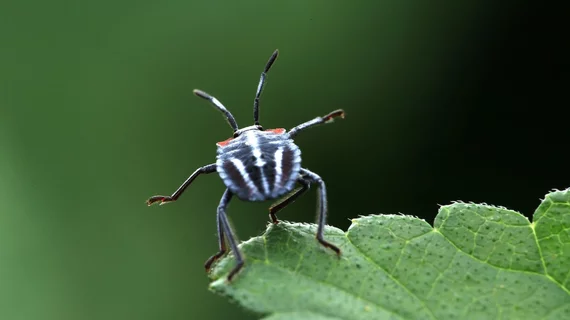Algorithm unmasks bugs bearing diseases
Health officials south of the border may soon be able to fight a nasty disease using just their smartphones and an AI tool for reverse image searches.
The disease is Chagas. It quietly kills more than 10,000 people a year, according to the World Health Organization.
The main source of its spread is the bite of an insect known as the kissing bug (scientific name: triatominae), which can be hard to positively identify and hits hard at rural people in Mexico, Central America and South America.
The tool is an algorithm that, in a new study, had 95.8% accuracy identifying a Mexican species from ordinary photos and hit 98.9% with a Brazilian species.
Using Google’s open-source TensorFlow—a version of the software behind Google’s everyday reverse-image search engine—the developers trained their algorithm with 1,989 pictures of various triatome species.
An update of an earlier iteration, the algorithm can now distinguish between 12 Mexican and 39 Brazilian species.
The work was led by Ali Khalighifar, a doctoral student at the University of Kansas.
In coverage of the study by that school’s news division, Khalighifar says the software is able to “understand,” based on pixel tones and colors, the image data such that it can test similar images against the initial datasets.
What’s notable about the work with the kissing bugs is the high rate of accuracy without image preprocessing, especially given the stakes in health outcomes, he says.
“You just start with raw images, which is awesome,” Khalighifar adds. “That was the goal. Previously it was impossible to do the same thing as accurately and certainly not without preprocessing the images.”
According to the WHO, approximately 6 to 7 million people worldwide (but mostly in Latin America) are infected with Trypansosoma cruzi, the parasite that causes Chagas disease. The infection is curable if treatment begins early. As many as 30% of chronically infected people develop heart conditions and up to 10% develop digestive, neurological or other maladies.
Given the harms, Chagas was surely a good place to start with animal-borne illnesses.
Khalighifar suggests the algorithm may be extendable to anyone with a smartphone, and he’s working on adapting it from images to sounds, focusing first on mosquitoes.
Related Chagas Disease Content:
Chagas disease increases the risk of CVD
Chagas parasitic heart disease threat creeps into U.S.
Chagas disease among topics at HRS 2019
AI, microscopic imaging mobile device detects parasitic infections in 20 minutes
RSNA 2016: How imaging can help treat Zika, other tropical diseases

